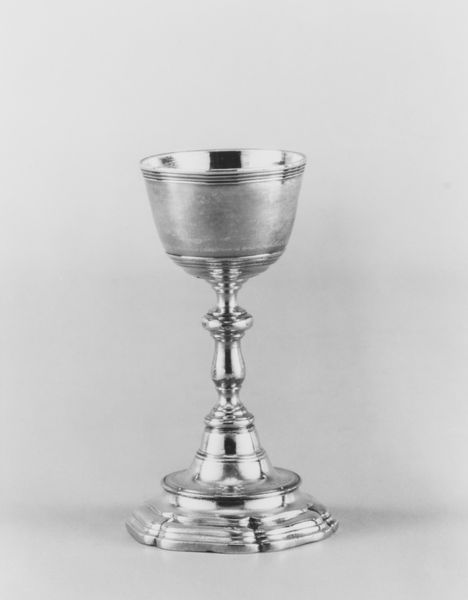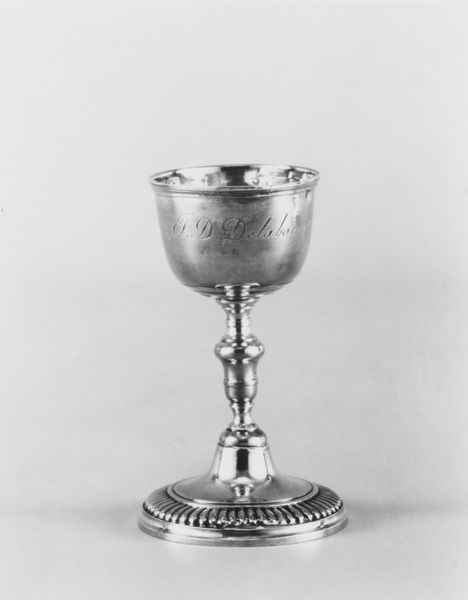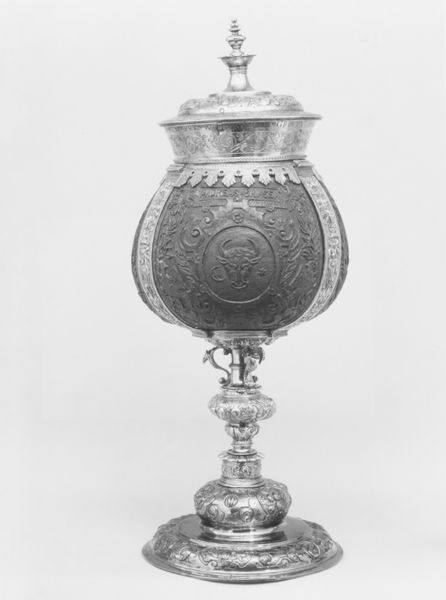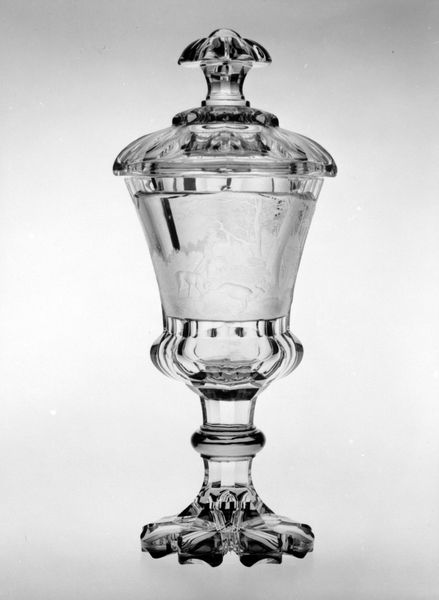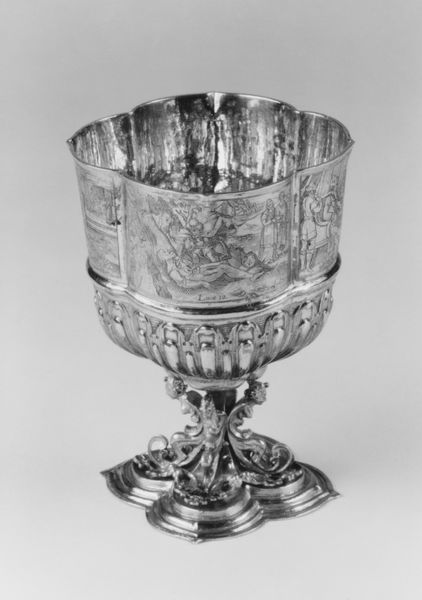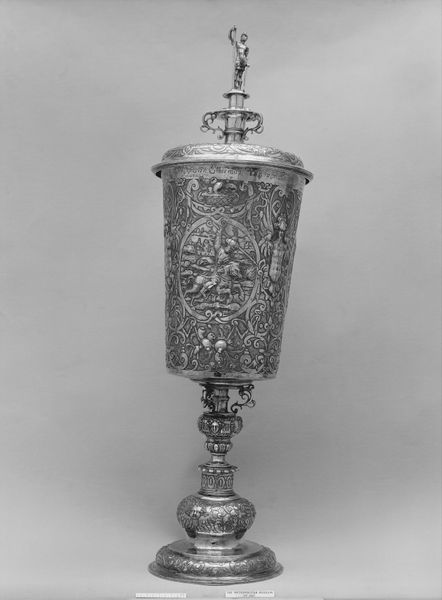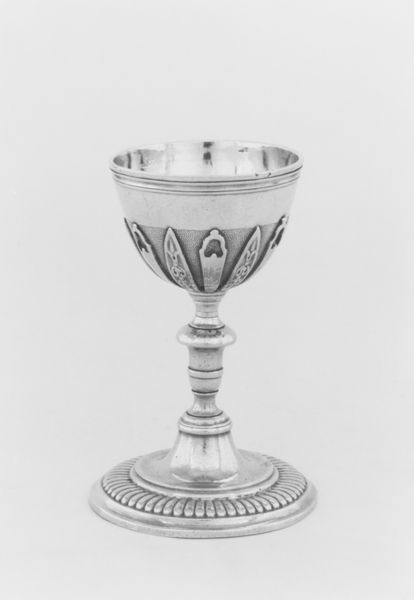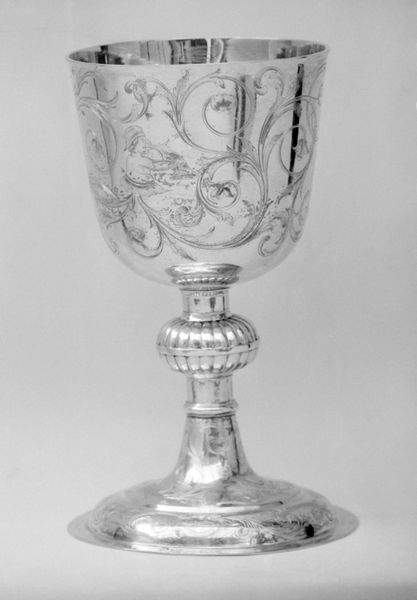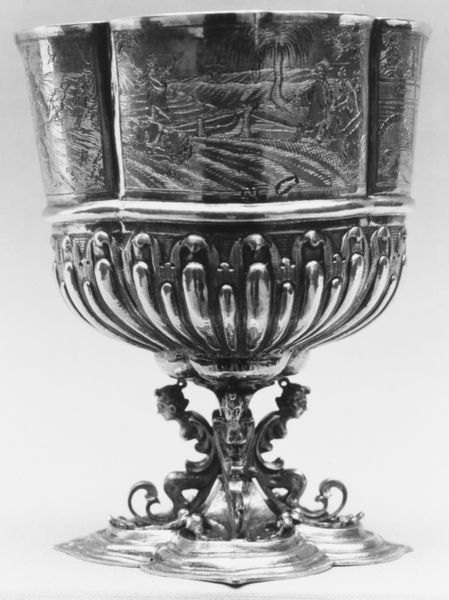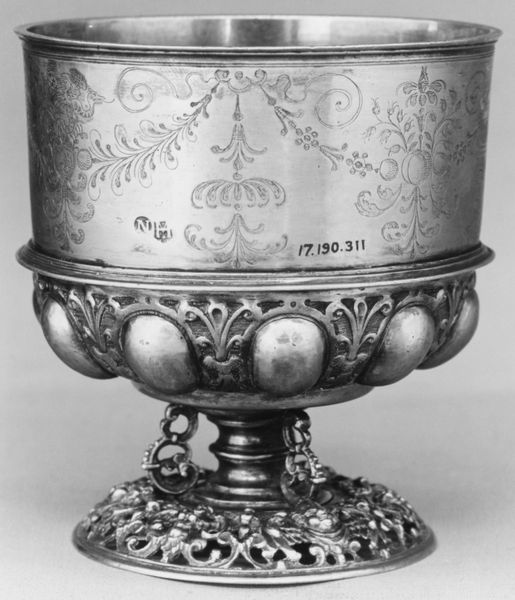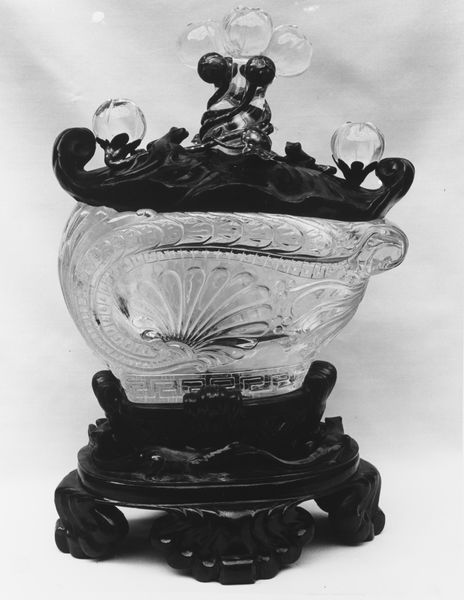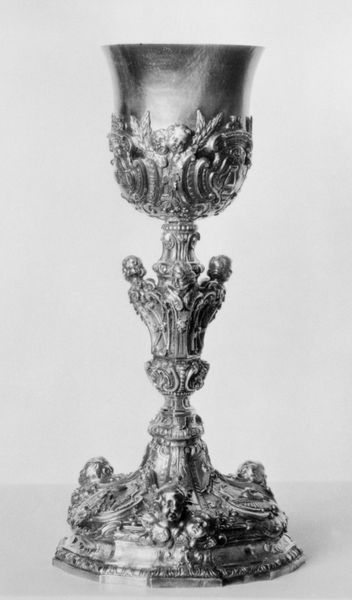
glass
#
glass
#
black and white theme
#
black and white
#
decorative-art
Dimensions: H. 10.3 cm; diam. of rim 9 cm
Copyright: Public Domain
Curator: This striking vessel is attributed to Antonio Salviati, crafted in Murano, Italy, sometime between 1875 and 1900. The Met identifies it as a probable salt cellar, and the entire object is glass. Editor: It evokes a restrained opulence—austere yet delicately detailed. There's an undeniable sense of its fragility but also of deliberate construction. It is difficult to read, even for the upper classes; is the artist speaking to elite, exclusive groups? Curator: Its formal elements speak clearly. Consider the rhythm established by the rows of applied decoration, those glass beads marching around the bowl and foot. The contrast of clear and opaque glass adds depth. Do you see a subtle, repeated motif, structurally linking bowl to base? Editor: I see echoes of Venetian sumptuary laws meant to curb excess. This feels like a material performance—ostensibly luxurious with a hint of imposed restraint. Do we know if Salviati meant to encode or question contemporary moral ambivalences through the transparency of his work? Curator: Perhaps. However, within the decorative-arts context of the late 19th century, the artist is demonstrating mastery of a difficult medium—celebrating glass for its own sake. Salviati draws inspiration from Venetian glass traditions while demonstrating his command over technique. Editor: Technique as political declaration—the assertion of local or national craft traditions in opposition to homogenizing globalism and industrialization! Did Salviati produce for private aristocratic collections, where class anxieties met nationalistic ideals? Curator: Records indicate pieces were exhibited at international expositions. This salt cellar operates as an artifact of aesthetic and technical prowess, communicating status, lineage, and identity. Its meaning is intrinsically interwoven with the narrative of craftsmanship. Editor: A narrative of privilege, and exclusivity then, communicated through an object both accessible yet paradoxically distanced from the everyday lived experience. We should, then, read not only for beauty, but for the social and political order implied through careful aesthetics and form. Curator: Indeed, it provokes us to question value judgments and encourages a close look at the confluence of history, materiality, and aesthetics, as well as socio-political readings of craft.
Comments
No comments
Be the first to comment and join the conversation on the ultimate creative platform.
